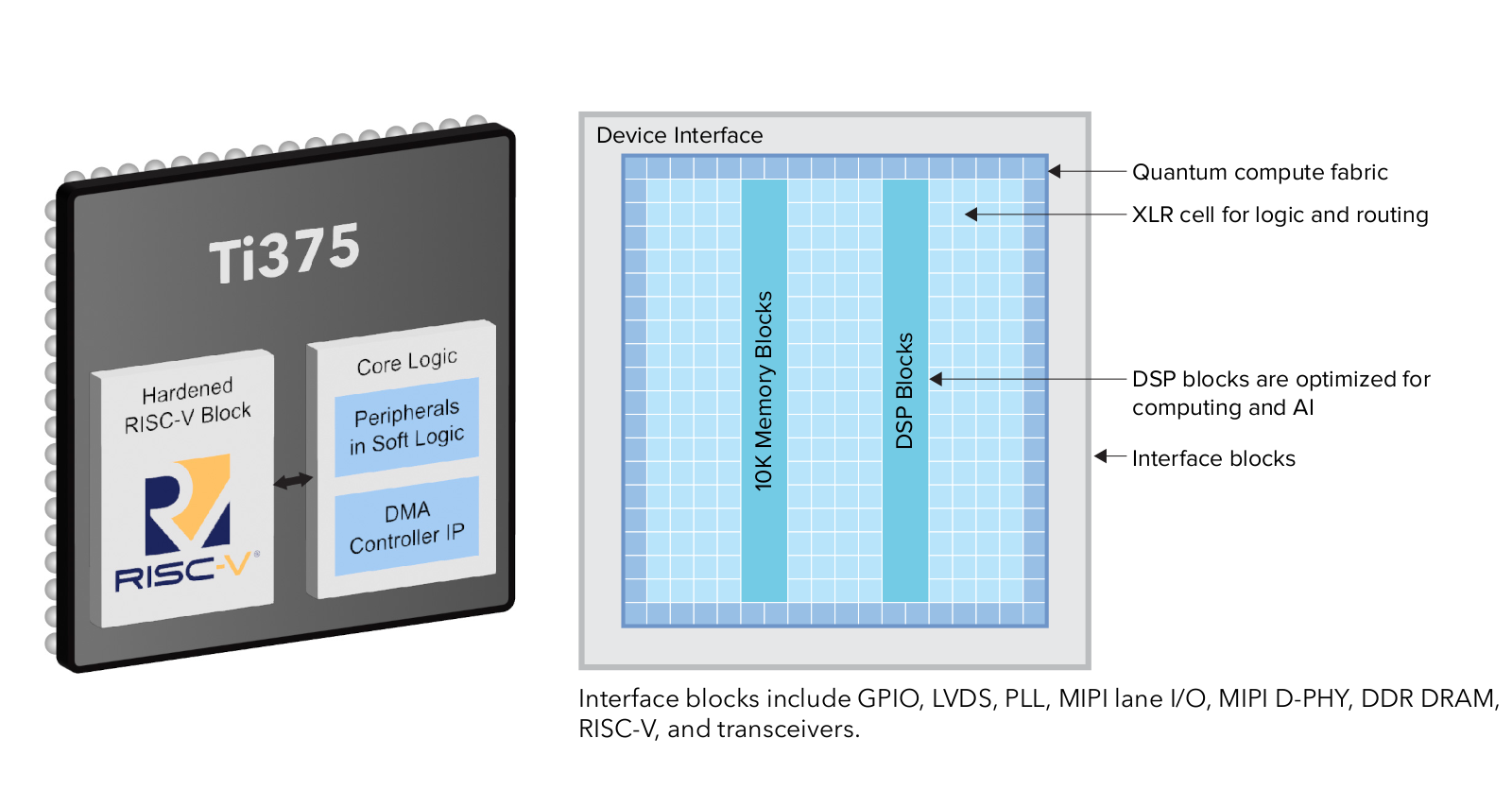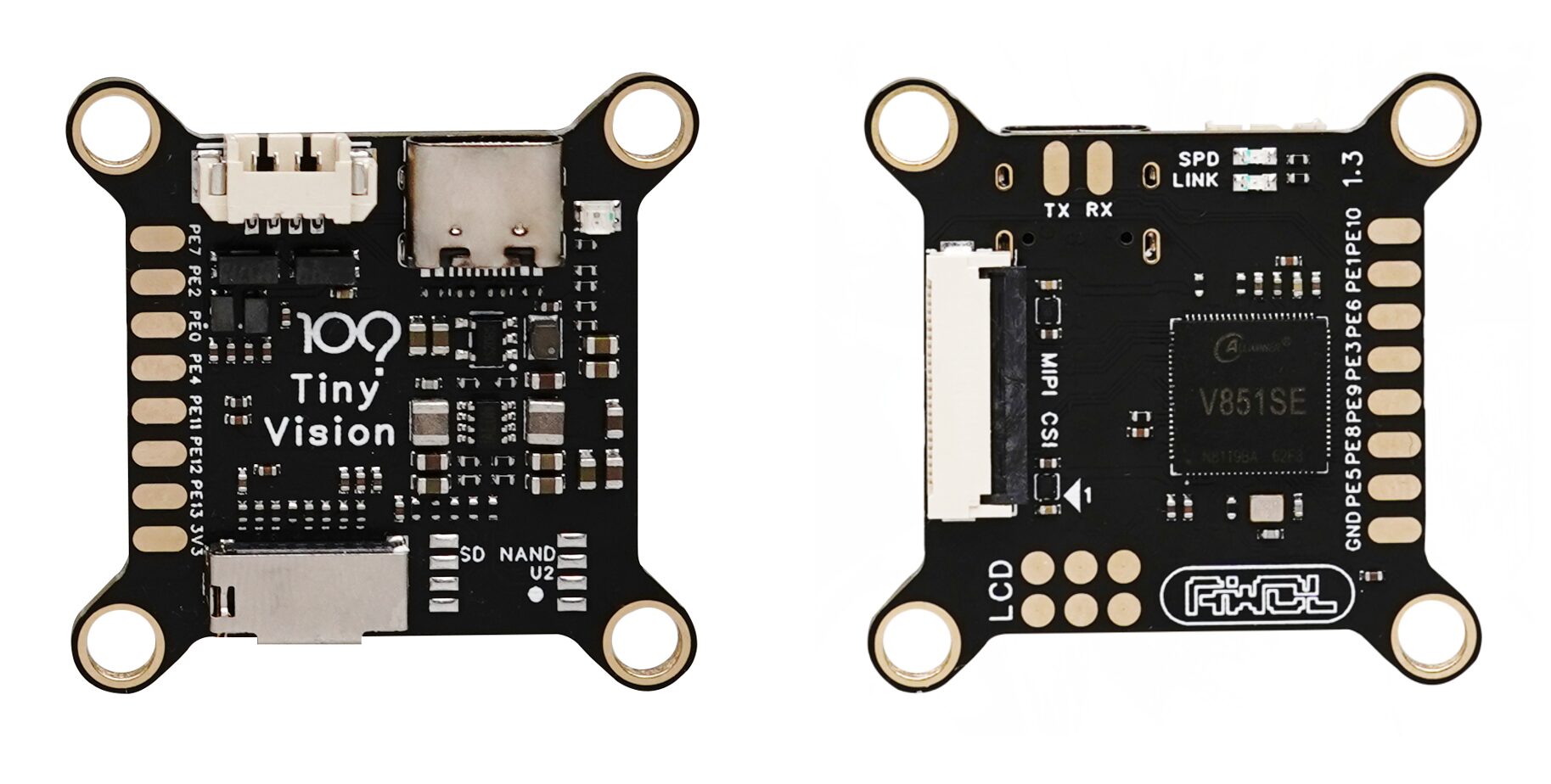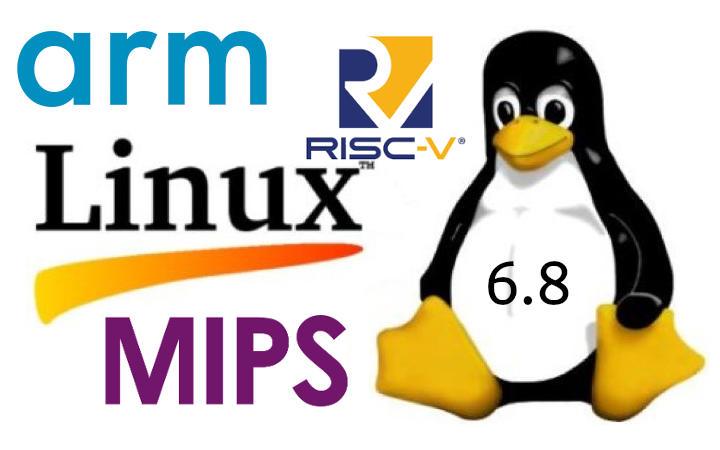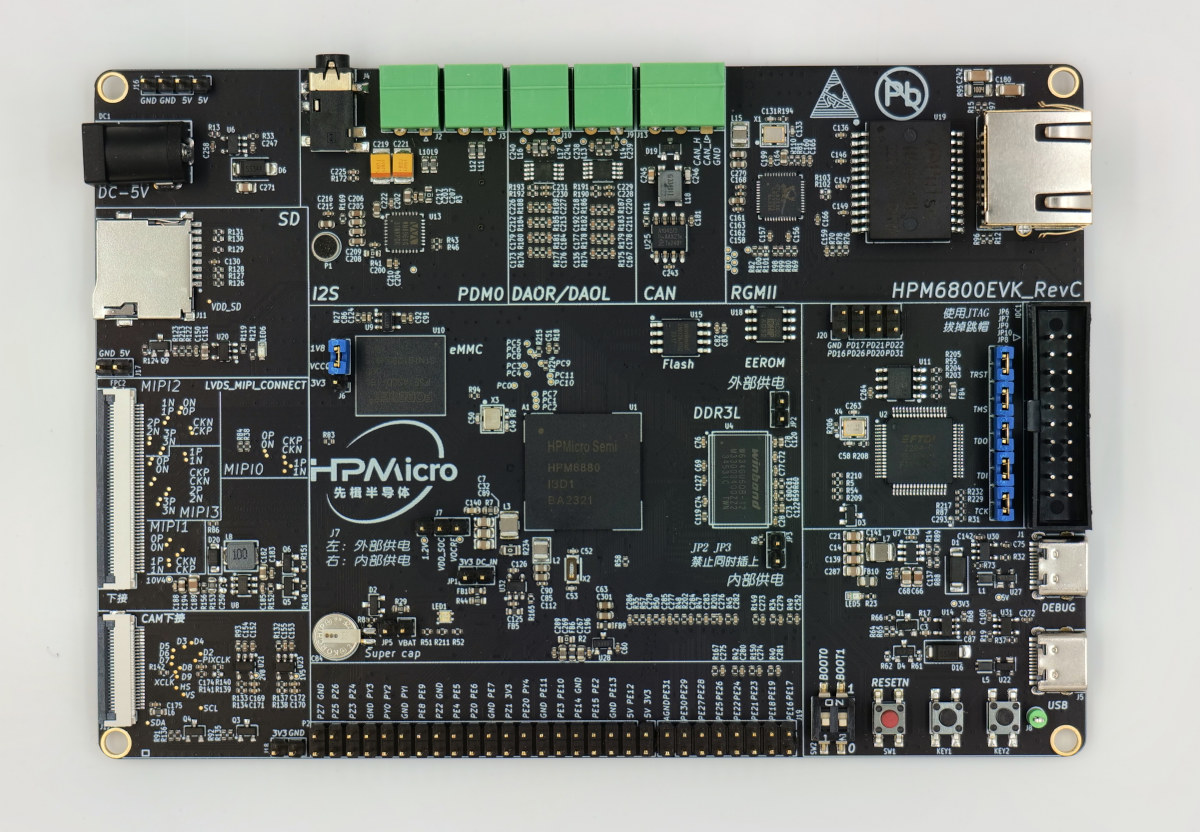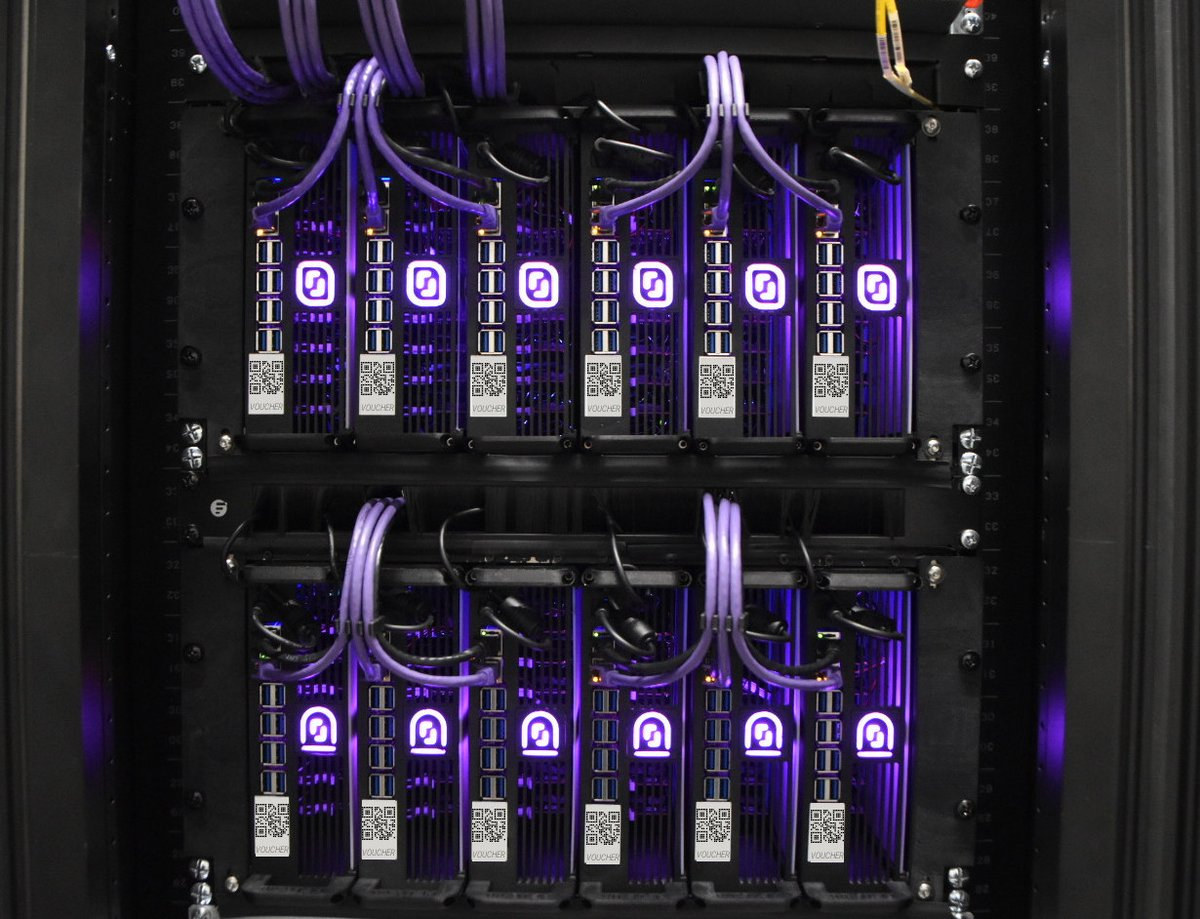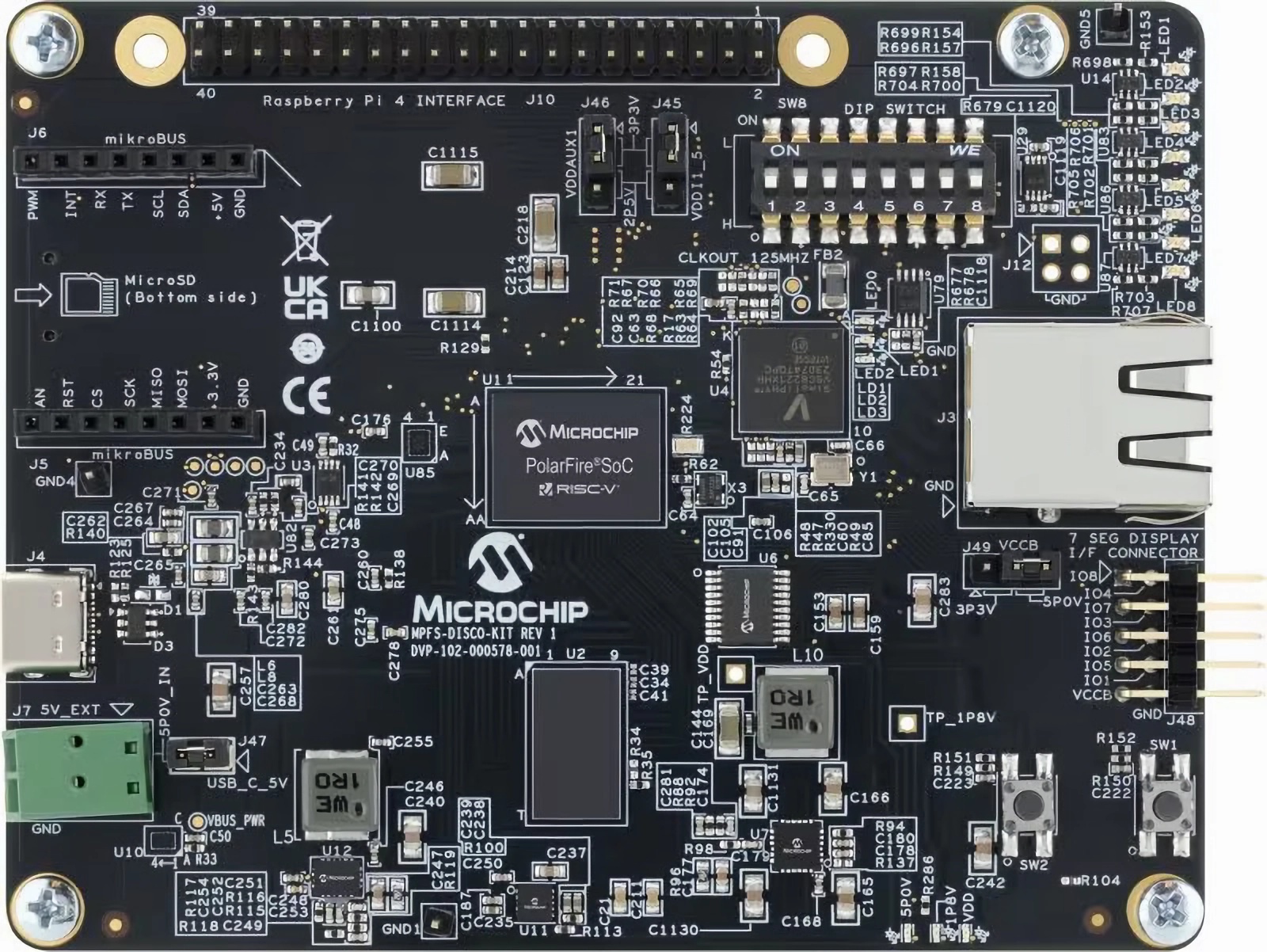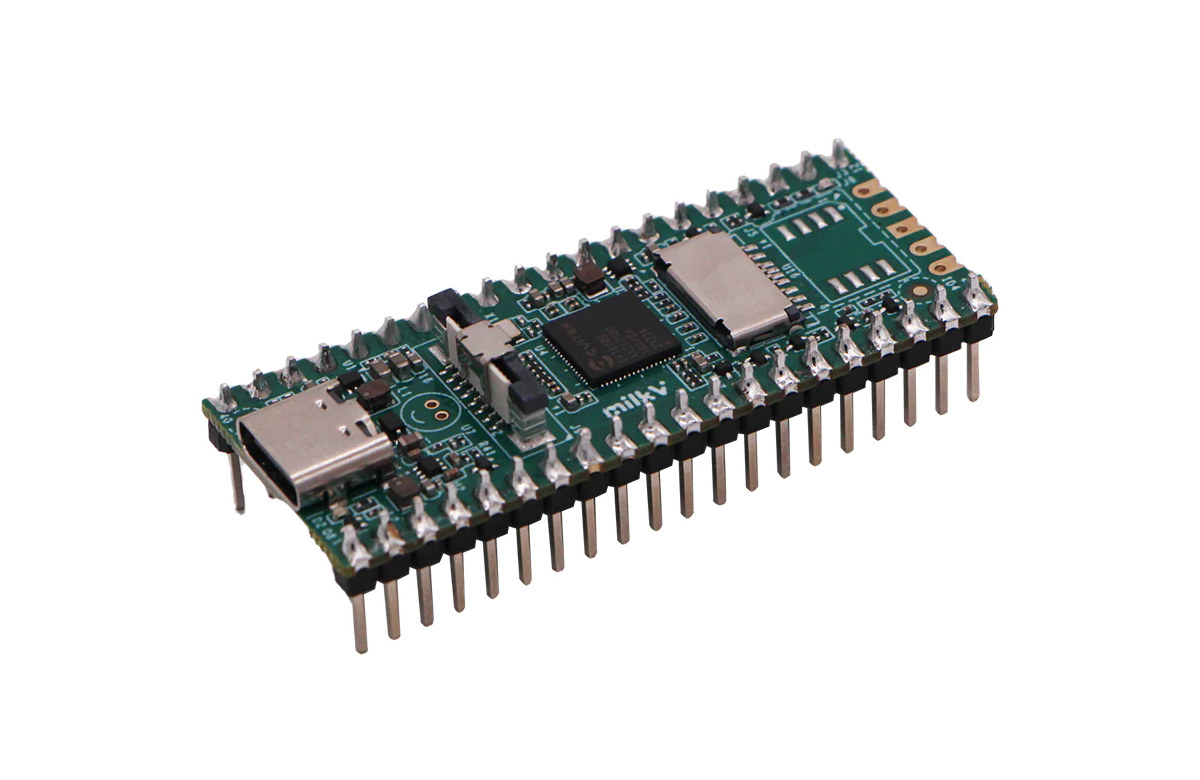Efinix Titanium Ti375 SoC combines high-density, low-power Quantum compute fabric with a quad-core hardened 32-bit RISC-V block and features a LPDDR4 DRAM controller, a MIPI D-PHY for displays or cameras, and 16 Gbps transceivers enabling PCIe Gen 4 and 10GbE interfaces. The Titanium Ti375 also comes with 370K logic elements, 1.344 DSP blocks, 2,688 10-Kbit SRAM blocks, and 27,53 Mbits embedded memory, as well as DSP blocks optimized for computing and AI workloads, and XLR (eXchangeable Logic and Routing) cells for logic and routing. Efinix Titanium Ti375 specifications: FPGA compute fabric 370,137 logic elements (LEs) 362,880 eXchangeable Logic and Routing (XLR) cells 27,53 Mbits embedded memory 2,688 10-Kbit SRAM blocks 1,344 embedded DSP blocks for multiplication, addition, subtraction, accumulation, and up to 15-bit variable-right-shifting Memory – 10-kbit high-speed, embedded SRAM, configurable as single-port RAM, simple dual-port RAM, true dual-port RAM, or ROM FPGA interface blocks 32-bit quad-core hardened RISC-V block […]
TinyVision is a compact Allwinner V851S/V851S3-powered Linux board for vision-based applications
Unrelated to tinyVision.ai, the TinyVision development board is a computer vision board from Chinese developer YuzukiTsuru powered by either the Allwinner V851S or the V851S3 and is billed as an “ultimate all-in-one solution for Linux motherboards, IPCs, servers, routers, and more.” It packs features such as a Cortex-A7 core running at 1200MHz, a 2-channel MIPI CSI input, and an independent image signal processor (ISP) capable of a maximum resolution of 2560 x 1440 in a compact form factor. TinyVision specifications: Processor – Allwinner V851SE / V851s3 with Cortex-A7 core @ 1200MHz and RISC-V E907GC core @ 600MHz NPU: 0.5TOPS (tera operations per second) @ INT8 precision Memory – 64MB DDR2 (V851se), 128MB DDR3L (V851s3) Storage – MicroSD card slot (supports UHS-SDR104), onboard SD NAND via SPI Display – 2-lane MIPI DSI (1280 x 720 @ 60fps), RGB LCD (320 x 240 @ 60fps) Video Input ISP with a maximum resolution […]
Linux 6.8 release – Notable changes, Arm, RISC-V, and MIPS architectures
Linus Torvalds has just announced the release of Linux 6.8 on the Linux kernel mailing list: So it took a bit longer for the commit counts to come down this release than I tend to prefer, but a lot of that seemed to be about various selftest updates (networking in particular) rather than any actual real sign of problems. And the last two weeks have been pretty quiet, so I feel there’s no real reason to delay 6.8. We always have some straggling work, and we’ll end up having some of it pushed to stable rather than hold up the new code. Nothing worrisome enough to keep the regular release schedule from happening. As usual, the shortlog below is just for the last week since rc7, the overall changes in 6.8 are obviously much much bigger. This is not the historically big release that 6.7 was – we seem to […]
HPMicro HPM6800 600 MHz RISC-V MCU comes with a Vivante 2.5D GPU with OpenVG support
HPMicro HPM6800 is a family of high-end RISC-V microcontrollers clocked up to 600 MHz integrating a VeriSilicon Vivante 2.5D GPU with support for the OpenVG 1.1 vector graphics API, and peripherals making it suitable for digital dashboard displays and human-machine interfaces (HMI). The family is comprised of three parts: the HPM6830 without video support, the HPM6850 with 2D graphics and video input/outputs, and the HPM6880 adding support for the 2.5D OpenVG GPU from VeriSilicon. All variants come with 1064KB SRAM, support for external DDR2/DDR3/DDR3 memory, NOR, PSRAM and eMMC flash, audio interfaces, and a range of peripherals with eight CAN FD interfaces, gigabit Ethernet, USB high-speed, and many more. HPMicro HPM6800 specifications: CPU – Single core 32-bit RISC-V (RV32-IMAFDCP) processor @ 600MHz with 32KB I/D Cache (3390 CoreMark) Memory 1064 KB SRAM with 256KB ILM + 256KB DLM in the RISC-V core, 512KB AXI SRAM, 32KB AHB SRAM, and 8KB […]
Scaleway launches hosted RISC-V servers for 15.99 Euros per month
French company Scaleway has just launched the “Elastic Metal RV1” bare metal servers which it claims to be the world’s first RISC-V servers available in the cloud with pricing at 0.042 Euros per hour, or 15.99 Euros a month excluding VAT. Scaleway launched some Arm servers based on Marvell Armada 370/XP quad-core Cortex A9 processor in 2015 before phasing those out a few years ago, and they are now just offering AMD and Intel-based servers and hosted Apple Mac computers based on the M1 Arm chip. But the company has decided to try something new again with the EM-RV1 servers based on Alibaba T-Head TH1520 quad-core RISC-V processor, 16GB RAM, and 128GB eMMC flash and running Debian, Ubuntu, or Alpine. EM-RV1-C4M16S128-A instance key features and specifications: SoC – Alibaba T-Head TH1520 CPU – Quad-core RISC-V Xuantie C910 (RV64GCV) processor @ 1.85 GHz GPU – Imagination BXM-4-64 with support for OpenCL […]
Embedded Open Source Summit 2024 schedule – Embedded Linux, Zephyr OS, and Real-time Linux
The Embedded Open Source Summit 2024 (EOSS 2024) will take place on April 16-18 and the Linux Foundation has already announced the schedule with conference sessions, lightning talks, and birds of a feather (BoF) sessions covering embedded Linux, Zephyr OS, and real-time (RT) Linux. While I won’t be attending in person, I still find it interesting to check out the schedule as we may learn more about the current status of embedded Linux. So I’ve created my own little virtual schedule out of the available talks. Tuesday, April 16 – Day 1, Embedded Open Source Summit 2024 9:05 – 9:45 – No, It’s (Still) Never Too Late to Upstream Your Legacy Linux-Based Platforms by Neil Armstrong, Linaro Nearly 7 years ago, Neil already spoke about this subject in Berlin, and it’s still very true. Do you maintain or used to maintain a Linux-based board or SoC off-tree? Then there are […]
Microchip announces the PolarFire SoC Discovery Kit, a low-cost devkit for Linux and real-time applications
The SoC Discovery Kit is the latest addition to Microchip’s list of development kits for the PolarFire series. The series is the first SoC FPGA family powered by a deterministic, coherent RISC-V CPU cluster. They provide low power consumption, thermal efficiency, and defense-grade security for smart, networked systems. They also support a deterministic L2 memory system for Linux and real-time applications. Microchip launched the Icicle Kit for the PolarFire SoC in 2020 and it was followed by the Video and Imaging Kit which was intended for mid-bandwidth imaging and video applications. Now, Microchip has announced the Discovery Kit which is billed as a low-cost alternative to the Icicle. The Discovery Kit retains the full range of features needed for testing concepts quickly, developing firmware applications, and programming/debugging user code. According to Microchip, the kit will bring “a low-cost RISC-V and FPGA development for learning and rapid innovation” to new and […]
Duo 256M is a compact SBC based on SG2002 multi-architecture SoC
Duo 256M is a small board powered by SOPHGO SG2002 multi-architecture Arm/RISC-V/8051 SoC with 256MB of on-chip RAM and a 1 TOPS NPU, a microSD card for storage, a camera connector, a USB-C port for power and programming, and two headers for GPIO expansion. We covered the SOPHGO SG2002 (and SG2000) Arm+RISC-V+8051 AI SoC earlier this month saying a couple of boards were expected very soon. We’ve already covered Sipeed LicheeRV Nano with optional Ethernet or WiFi 6, and now we’ll look at the Duo 256M designed by Milk-V Technology in more detail since it’s available now. Duo 256M specifications: SoC – SOPHGO SG2002 Main core – 1GHz 64-bit RISC-V C906 or Arm Cortex-A53 core (selectable) Minor core – 700MHz 64-bit RISC-V C906 core Low-power core – 25 to 300MHz 8051 MCU core NPU – 1 TOPS INT8, supports BF16 Integrated 256MB DDR3 (SiP) Storage MicroSD card slot 32Gbit NAND […]


